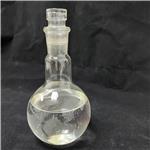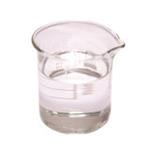OT can be used as a sulfur precursor for the preparation of shell for CdSe/CdS quantum dots. It forms ligands that help in enhancing the power efficiency of hetero-junction nanorod sensitized solar cells as it enhances the electron extraction from the nanorod and TiO2 interface. OT based stabilized coating on copper nanoparticles (CuNPs) may be used in the dispersion of these colloidal particles in different sample solutions. It can be used to improve charge injection by creating a monolayer on gold source-drain electrode surfaces for bottom-contact thin-film transistors (TFTs).
1-Octanethiol can be used to improve charge injection by creating a monolayer of this material on gold source-drain electrode surfaces for bottom-contact thin-film transistors (TFTs).
ChEBI: Octane-1-thiol is an alkanethiol that is octane substituted by a thiol group at position 1.
A clear colorless liquid. Flash point 115°F. Insoluble in water and less dense than water. Used to make other chemicals.
Flammable. Insoluble in water.
1-Mercaptooctane is incompatible with the following: Oxidizers, reducing agents, strong acids & bases, alkali metals .
TOXIC; may be fatal if inhaled, ingested or absorbed through skin. Inhalation or contact with some of these materials will irritate or burn skin and eyes. Fire will produce irritating, corrosive and/or toxic gases. Vapors may cause dizziness or suffocation. Runoff from fire control or dilution water may cause pollution.
HIGHLY FLAMMABLE: Will be easily ignited by heat, sparks or flames. Vapors may form explosive mixtures with air. Vapors may travel to source of ignition and flash back. Most vapors are heavier than air. They will spread along ground and collect in low or confined areas (sewers, basements, tanks). Vapor explosion and poison hazard indoors, outdoors or in sewers. Runoff to sewer may create fire or explosion hazard. Containers may explode when heated. Many liquids are lighter than water.
Pass the thiol through a column of alumina and work under N2, or Ar. Distil it under N2 and a vacuum. Store it under N2, or Ar in the dark. [Battacharyya et al. J Chem Soc, Faraday Trans 1 82 135 1986, Fletcher J Am Chem Soc 68 2727 1946]. [Beilstein 1 III 1710, 1 IV 1767.]



